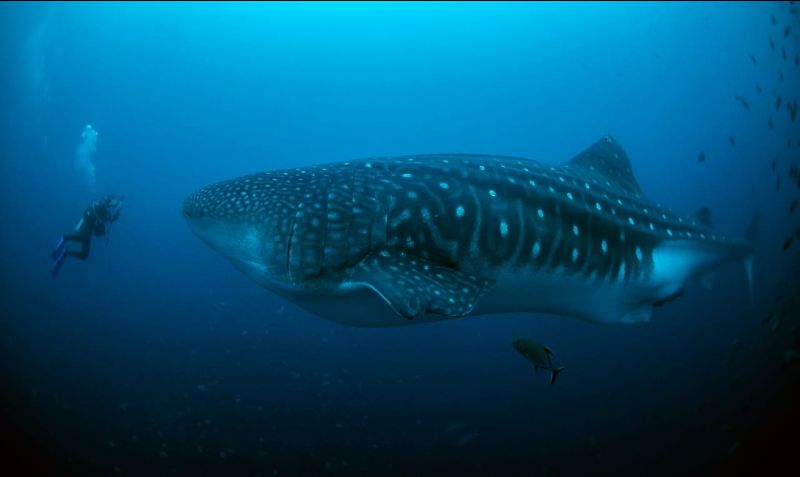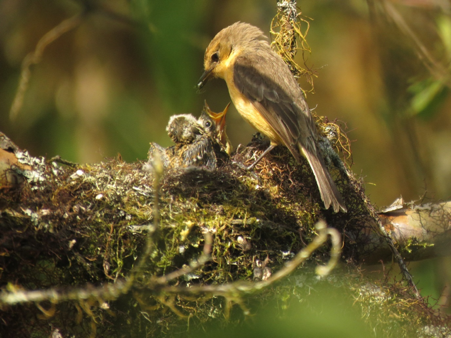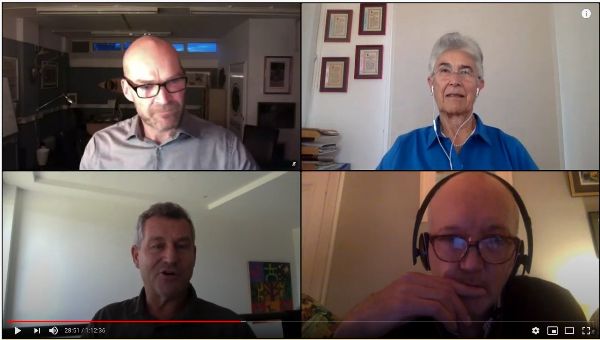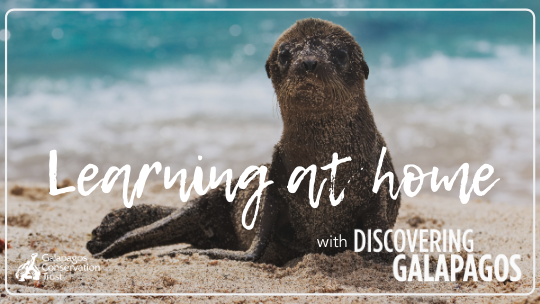
2020 Successes!
As we approach the end of 2020, we want to say thank you so much for all your support in what has been an extremely difficult year.
As we approach the end of 2020, we want to say thank you so much for all your support in what has been an extremely difficult year.
Due to the pandemic, our income has been hit hard. The consequences of a global lockdown have also put even more pressure on the wildlife of Galapagos. However, thanks to the incredible support from our donors, we are in a stronger position than expected at the end of 2020 and, despite these challenges, we have achieved a huge amount.
Below are some of our 2020 successes:
A record-breaking year for whale sharks

Nemo the whale shark © Galapagos Whale Shark Project
The year started with great excitement after the Galapagos Whale Shark Project (GWSP) team noticed that one of the whale sharks tagged in September 2019, named ‘Hope,’ was logging the longest-ever recorded satellite track for the Project. Sadly, however, in May we learned that Hope’s tag stopped transmitting in an area of intensive industrial fishing in the high sea near the Galapagos Marine Reserve. Despite “losing Hope”, her tracks provided amazing insight into the long-distance migrations of whale sharks once they leave the safety of the Galapagos Marine Reserve (GMR).
During their August 2020 research trip, the GWSP team tagged ten more sharks with satellite tags. Two, Coco and Nemo, have already made history. In September, Coco was the first tagged whale shark to follow the swimway’ between Galapagos and Cocos island in Costa Rica. More recently, Nemo returned to Galapagos 80 days after first being recorded at Darwin island. She is the first recorded whale shark to travel from Galapagos, leave the Ecuadorian Exclusive Economic Zone (EEZ), move along the proposed Cocos-Galapagos Swimway and then back to Galapagos.
Sadly migratory species are at risk once they leave the GMR, particularly from industrial fishing, as was highlighted during summer 2020 with the arrival of a huge international industrial fishing fleet, most of which was Chinese, on the outskirts of the Ecuadorian EEZ. These tagged whale sharks are extremely crucial as they help to highlight the importance of expanding the protection around the Galapagos Islands, and along important migration routes such as the Swimway.
Recovering from the impacts of the pandemic
The sudden halt in tourism, which makes up 80% of the local Galapagos economy, caused a huge increase in financial hardship in the community. In response to the pandemic, GCT is facilitating the opportunity for families to grow their own food through our Urban Family Gardening project.

18-year-old plastic scientists Ruben (pictured front-centre) and Sebastian (pictured left) © Anne Guezou
We’re also very proud to be supporting the United Nations Development Programme’s ‘Save Galapagos Islands: Empower Its People‘ campaign to help the local community of Galapagos through the economic impact of the pandemic. Across Santa Cruz, Isabela and San Cristobal islands, two ‘cash for work’ beach cleans took place in November and December 2020. As well as providing vital paid work for about 90 people impacted by the loss of tourism, it offered an excellent opportunity to collect important data for our Plastic Pollution Free Galapagos (PPFG) programme. We sent 18-year-old plastic scientists Ruben (pictured above front-centre) and Sebastian (pictured above left), to gather images for the Garbology component of our programme.
Most successful breeding season yet for the little vermillion flycatcher

Female little vermilion flycatcher feeding a chick of a successful nest in 2020. © Agustin Gutierrez/CDF
Incredibly exciting news came in July – six little vermilion flycatcher chicks successfully fledged their nests on Santa Cruz as part of our Saving the Little Vermilion Flycatcher project – making 2020 the most successful breeding season yet.
Huge numbers attend virtual Galapagos Day

GCT’s President Monty Halls and the speakers at Galapagos Day 2020
Just under 1000 people from over 45 countries registered for our first-ever virtual Galapagos Day event. Our speakers, Yolanda Kakabadse, Jonathan Green and John Schofield informed us about both the wonders of the Galapagos Marine Reserve and the issues it faces including from international fishing fleets and plastic pollution. GCT’s President Monty Halls described Galapagos as “a precious global jewel” and highlighted the fact that we must never give up on protecting the Archipelago.
“Learning at Home” resources

We all had to adapt quickly during the pandemic. During lockdown, parents were required to be teachers, children were learning everything at home, and we wanted to help. We believe that education is key to inspiring future generations to care and protect for the environment, so we created a series of resources to help families learn from home including our Marti the Hammerhead Shark guided reading, and our Plastic Pollution Free Galapagos Educational Resources which are available in both English and Spanish.
_______________________________________________________________
We couldn’t have done any of this without you. We rely on our supporters and each of you counts.
If you are not already, please consider becoming a member this Christmas and become a part of the ongoing efforts to preserve and protect these incredible Islands and their unique flora and fauna.
Thank you and Merry Christmas.

